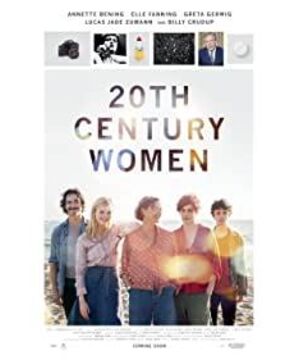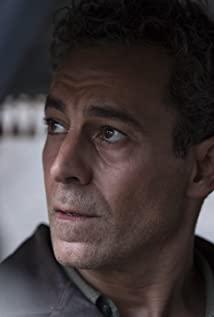Looking back at this year's Oscar nominations for Best Original Screenplay, there is an obscure "Woman of the Twentieth Century", written and directed by Mike Mills. In 2010, he became famous for his semi-autobiographical film "Beginner", which not only starred Ivan McGregor, but also allowed Christopher Plummer to win the Oscar for Best Supporting Actor. After six years, Mike Mills once again brought us a new work, this time it is a private memory of his mother. It is also a semi-autobiographical creation. Through his unique perspective, Mike Mills cuts into the life styles of the last century from a female perspective, allowing us to glimpse the cross-section of the American social picture in the twentieth century and how many people are in it. Generations, differences in dealing with people and different life pursuits, together they constitute the 20th century that people love and hate.
As time goes by, no one is the protagonist in the story of the times, and no one is different from others. Every tiny individual difference is drowned in the irresistible torrent under the changes of the times. The rest are eternal memories, everyone's memories of their golden age. The mother may be in the flight school during the war, the son is the time of love as a teenager, Abbie is the time of studying in New York, Julie is the time of reading by the river and so on.
The title of the film is "20th Century Women", and it does not specifically refer to "20th Century Mothers" or "20th Century Girls", so what we see on the posters are three 20th century women of different ages: Julie, Dorothea, Abbie. They were born in 1924, 1955, and 1962, and the story of the movie took place in 1979. They were 55, 24, and 17 years old respectively. They pieced together the middle-aged, young, and minor in the twentieth century. Three images of women.
These elements are destined for this movie. It is not a biography, but a portrayal of a group of characters. Most of the character prototypes are derived from the director's early experience. This also makes the state and dialogue of the object more natural and true. The lens is not full of blunt symbols of the times, but focuses on the mental states of individual characters under the accompaniment of the times.
Use a simple sliding lens to focus on the key figures. It is not a simple matter to use a two-hour movie to introduce five characters one by one. The arrangement of the sequence and the creation of the scene should not make the audience visually fatigued, but also avoid stylization. So Mike Mills chose to use the composition to focus on the audience’s field of vision. Appropriate occlusions and scene restrictions allow the audience to easily read the key points in each shot, pay attention to the core characters, and follow the shots to penetrate the characters’ hearts. .
The following plot analysis involves spoilers. The downloaded resources of the film show the psychology of three generations of women and the changes of the times through their attitudes towards the relationship between the sexes. According to her son, the 55-year-old mother Dorothea was one of the first independent women to enter the workplace after World War II. However, she was unable to maintain a stable relationship with men. She has a sense of openness and equality, but also has a conservative attitude towards certain things, such as love and sexual relations.
When William kissed her at the bar, she asked blankly: What does this kiss mean. She could not understand the sex without love, such as William and Abbie's one-night stand, and she could not understand the love without sex, such as her son Jamie and Julie spending the night together, but nothing happened. She is the eldest person in the film who spent her entire life spanning the 20th century. From walking in the forefront of the times, catching up with the times, and then being left behind by the times, her mother Dorothea's life was romantic and lonely, strong and fragile, open and conservative. Julie, 17, is the same age as Dorothea's 15-year-old son Jamie. Born during the Vietnam War, she is a confused generation who indulged in punk rock and the proliferation of drugs. Although Julie is not drug-ridden, she likes to smoke and be as cool as a boy. She said that the most important thing for a person to be strong is not to pretend to be sensitive and innocent.
She is a girl who can have casual sex with different boys without a reason. For her, the experience of sex is indescribable. She likes to have pure sexual relations with people. She does not need the understanding of lovers. She is a sentimentalist about the relationship between the sexes. She is obsessed with the groaning of men’s contentment in sex. There are also those who are addicted to the body, half regret and half orgasm experience. Abbie, 24, is an affirmative who pursues art and the meaning of life. She even had to find the meaning of her own cancer in her life. Everything around her has a soul to her. It is not difficult to understand how sad she was when she learned that she might not be able to have children, because perhaps the most meaningful thing in her life would be missing from now on.
The two books she gave to Jamie are "Our bodies Our selves" and "Sisterhood is powerful". She said that while men mate with women and obtain happiness, they also need to understand that women have menstrual periods. She needs sex, but she needs a reason. And her reason was definitely not the "love" believed by the generation of her mother Dorothea, but a need for both parties, so she asked the guest William to play the role of photographer and model with her in order to sleep with him. The first half of the film took an hour to show the different attitudes of three kinds of women towards the relationship between the sexes. The personalities and values of the three generations are immediately revealed. This also depicts the evolution of the relationship between the sexes and the living conditions of men and women in the last century under the cultural background of different ages.
The mother and child move away from each other to move forward in sync. In the story, the only main thread that has a succession is the mother and son of Dorothea and Jamie. In the first half of the film, the director constantly inserted scenes of his son Jamie skating on the road alone. For the second time, simply let the son slide in front, and the mother drove behind, which more directly conveyed the dynamic relationship between mother and son.
In the first scene of the film, there is a very special 90-degree camera movement, starting from the back of the mother Dorothea, and gradually shifting to the side of the mother’s smoking face. After that, she told how the son in her eyes met the growing up. The problem", the contradiction between mother and child has also been exposed.
Early the next morning, the film moved to the second scene. The mother asked the tenant Abbie and her son’s young Julie to help her lead her son Jamie to the path of a mature man. Afterwards, the film was in contact with her son Jamie and Julie and Abbie. Introduced the lives of the two of them.
Halfway through the film, even though a lot of things happened in the middle, the shot here continues the previous 90-degree close-up. Note that the mother's clothes and bracelets have not changed. From the side face of the mother Dorothea, to her front face. She began to talk about the future, what disease she will die of, when she will die, and what kind of environmental, war, and economic problems her son Jamie’s generation will experience. As the mother lay down, the second act ended.
These two surround close-ups for the mother add up to 180 degrees. This is the first time the film has surpassed the timeline, inserting the future into the narrative sequence of flashbacks, and the next time the timeline jumps like this, the narrative about the future will come from her son and happen at the end of the film. This kind of processing is rare in movies and can easily cause confusion in the audience's sense of time. However, in this net-like, linear narrative film, the audience does not feel confused. This is related to the director's use of the lens and the picture. In terms of segmentation, there is a great relationship.
In the third act of the story, Abbie gave Jamie two books to help him understand the body and mind of women. And Julie is trying to be Jamie's psychologist and sharing her experience. When the mother felt that all this might be too much for her 15-year-old son, and wanted to end this counseling. The plot has reached a climax. The three women at the dining table once again launched their own speeches on women's menstrual and sexual experience.
The conservative Dorothea believes that women’s privacy and vocabulary should be avoided at the dinner table, but Abbie asks every man at the dinner table to pronounce the word Menstruation aloud together. After that, Julie forcibly shared with everyone, her first menstrual cramps and her first experience of losing her virginity. This forced Dorothea to end the party early. Here again, the three women's different views and reactions to themselves, to both sexes, and to the surrounding environment are highlighted.
Finally, the film came to the fourth scene. After the mother and son reconciled, the five people gathered together again in the small motel, while the mother turned up the volume of the radio and invited the son to dance together. This time, the roles of son and mother have begun to move towards an equal relationship. The son is also a future man, and the mother is just an ordinary woman.
When the mother dyed her son's blond hair, on the way home, the son didn't slid in the front alone, but took the mother's car window and drove on the highway together. From the heart to the pace, the two finally got the synchronization, even if it was short-lived. Just like the son said, the two are fine, so they are back to their original state, without the help of others, but the mother and son are two people who spend the end of the twentieth century together, and the mother gradually enters old age. , The son enters adulthood.
The film begins with the contradiction between mother and child, and ends with the mother-child relationship returning to its original point. The other characters are also linear developments from now to the future, and there is no major ups and downs in life, just like the ordinary generation in the complicated 20th century. People, even generations, have encountered life difficulties and ordinary life journeys. The director's ambition and strong control ability, the story and dialogue of the script, are obviously more interesting and dramatic than "Beginner", and the finalist for the Oscar for the best original script is definitely the result of his strength. The fast-forward movement and the tranceful sense of the times. In addition to using a lot of photos, news, and TV materials to create a strong sense of the times, the film also constantly uses fast forward and color overlap to create a sense of time flow. Every time a character moves, especially when moving between two points in the car, the lens uses illusory color processing, and fast-forward to let the audience feel the passage of time.
This technique is repeated from the beginning of the son’s trip to Los Angeles to the end of the mother’s search for his son.
At the end of the film, the son said: It is difficult for him to describe to his children what kind of person his grandmother is. Once again, the rapid development of the twentieth century has created individual complexity. Mother Dorothea has almost experienced and witnessed the most and greatest changes in human society. In the rapid 21st century, their thoughts and actions have been left far behind in the last century.
As of today, our mother Dorothea is the generation of our grandparents. Regardless of whether they have left or not, they experienced World War II and the Civil War, and saw the founding of New China, followed by several famines and difficult times. Nowadays, every time I connect with my grandma from Beijing, I believe she can hardly imagine that the Internet in the 21st century can make communication between people no longer have obstacles. And it is difficult for us to imagine what they have experienced in their entire lives.
In the film, the future Julie went to Paris with his lover and chose to be the DINK family. Abbie struggled with cancer and chose to marry and have children. And mother Dorothea, the happiest moment is every birthday, once again enjoy the dream of becoming a pilot and experience the fun of flying in the air. Back to that, never belonged to her golden age. The concept of time is pulled away again at the end of the film, and the whole story ends in the intertwined memories of mother and son.
"The Woman of the Twentieth Century" is a story that will see an American grandma crying, and for us, it is a story that needs to be experienced slowly. Dorothea's frowning brows, Abbie's dance, and Julie's smoking posture are all pictures worthy of my quiet appreciation. The life concepts of the characters are more or less connected with you and me in the 21st century. We abandoned them. Everything from them has inherited everything from them, and each age is our own golden age. March 1, 2017 Toronto Xiao Xuan Er Ji--------------------------------------- - If you like my article,
Welcome to follow "Xiao Xuan Er's Late Night Chat" on Station B or Youtube
https://space.bilibili.com/1340064530
Update every Friday, currently available to watch
#日本电影师Blu-ray suit series
#Taiwan Film Master Blu-ray Collection Series
#New and old film mixed cut series
There will be more CC Blu-ray set series in the future
Thank you for your support! Every one of your attention is precious to me!
View more about 20th Century Women reviews











